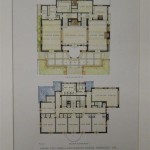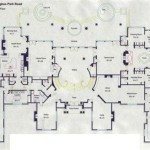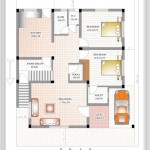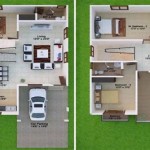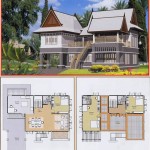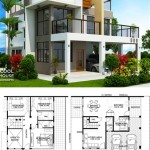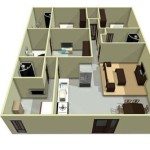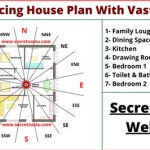DIY Timber Bed Frame Plans: A Comprehensive Guide
Building a timber bed frame offers a rewarding project for both novice and experienced woodworkers. A custom-built frame allows for personalized design choices, material selection, and cost savings compared to purchasing a pre-made bed. This guide will cover essential considerations and steps for constructing a sturdy and aesthetically pleasing timber bed frame.
Planning and Design: Before commencing construction, meticulous planning is crucial. Start by determining the desired bed size, whether twin, full, queen, or king. Accurate measurements are essential for sourcing the correct amount of timber. Consider the room dimensions, ensuring the frame fits comfortably while allowing sufficient space for movement. Sketching a design, even a rudimentary one, helps visualize the finished product and identify potential construction challenges.
Material Selection: Choosing the right timber is fundamental to the frame's strength and longevity. Popular choices include pine, cedar, oak, and maple, each offering distinct aesthetic and structural properties. Pine and cedar are softer woods, easier to work with, and more budget-friendly. Oak and maple are hardwoods, providing increased durability and a more luxurious appearance. The timber should be kiln-dried to minimize warping or shrinking after construction. When purchasing, ensure the wood is straight and free from large knots or defects.
Tools and Equipment: Gathering the necessary tools beforehand streamlines the building process. Essential tools include a measuring tape, saw (circular saw, miter saw, or hand saw), drill, screwdriver, wood glue, clamps, sandpaper, and a safety gear such as safety glasses and dust mask. A Kreg Jig system can simplify joinery and enhance structural integrity, particularly for those less experienced with traditional joinery techniques.
Frame Construction: The basic frame consists of two side rails, two end rails, and several support beams. Cut the timber to the required lengths based on the chosen bed size. The joinery method is crucial for stability. Common options include mortise and tenon joints, dowel joints, or using screws and brackets. A Kreg Jig system simplifies pocket hole joinery, creating strong and discreet connections. Assemble the side and end rails to form the rectangular frame perimeter. Then, attach the support beams, spaced evenly across the frame, to support the mattress and prevent sagging.
Headboard and Footboard (Optional): A headboard and footboard enhance the bed's aesthetic appeal and provide functional back support. These can be simple panels of timber or more elaborate designs incorporating decorative elements. Consider using contrasting wood types or incorporating upholstery for a customized touch. Attach the headboard and footboard securely to the main frame using appropriate hardware.
Finishing Touches: Once the frame is assembled, sand all surfaces smooth to prepare for finishing. Applying a stain enhances the natural wood grain and adds color. Several coats of sealant or varnish provide protection against moisture and wear. Allow ample drying time between coats for optimal results. Consider adding felt pads to the bottom of the frame legs to protect flooring from scratches.
Slat System: The slat system provides support for the mattress and allows for air circulation. Solid wood slats or flexible plywood slats are common choices. These rest on support rails or ledges attached to the inside of the frame. Ensure adequate spacing between the slats for proper mattress support and ventilation.
Frame Variations and Customization: Numerous variations exist for timber bed frames, allowing for personalized customization. A platform bed eliminates the need for a box spring, featuring a solid platform or closely spaced slats. Storage beds incorporate drawers or lift-up mechanisms for maximizing space utilization. Four-poster beds add a touch of grandeur with vertical posts at each corner. Consider incorporating unique design elements such as carved details, contrasting wood inlays, or metal accents.
Safety Considerations: Prioritize safety throughout the construction process. Wear appropriate safety gear, including eye protection and a dust mask. Ensure adequate ventilation when working with stains and sealants. Use caution when operating power tools, and follow manufacturer instructions carefully. Double-check all measurements and connections to guarantee stability and prevent potential hazards.
Resources and Further Learning: Numerous online resources, including woodworking forums and video tutorials, offer detailed instructions and inspiration for DIY timber bed frame projects. Local woodworking classes provide hands-on learning experiences and guidance from experienced instructors. Consulting with lumberyard staff can provide insights into material selection and construction techniques.

Diy Bed Frame Wood Headboard 1500 Look For 200 A Piece Of Rainbow

Diy Bed Frame Wood Headboard 1500 Look For 200 A Piece Of Rainbow

Diy Bed Frame Wood Headboard 1500 Look For 200 A Piece Of Rainbow
:max_bytes(150000):strip_icc()/diycandy-97114db35d884d62b464a51cd9e1e9f9.jpg?strip=all)
21 Diy Bed Frames You Can Build Right Now

Diy Bed Frame Wood Headboard 1500 Look For 200 A Piece Of Rainbow

Diy Modern Rustic Bed Frame Build Plans Based On The West Elm Alexa Green Willow Homestead
:max_bytes(150000):strip_icc()/apieceofrainbow-a4ac6d2cd6dc4b9694e33e80592b797f.jpg?strip=all)
21 Diy Bed Frames You Can Build Right Now

Diy Bed Frame Wood Headboard 1500 Look For 200 A Piece Of Rainbow

Diy Bed Frame Wood Headboard 1500 Look For 200 Easy

Queen Bed Frame Plans Howtospecialist How To Build Step By Diy

